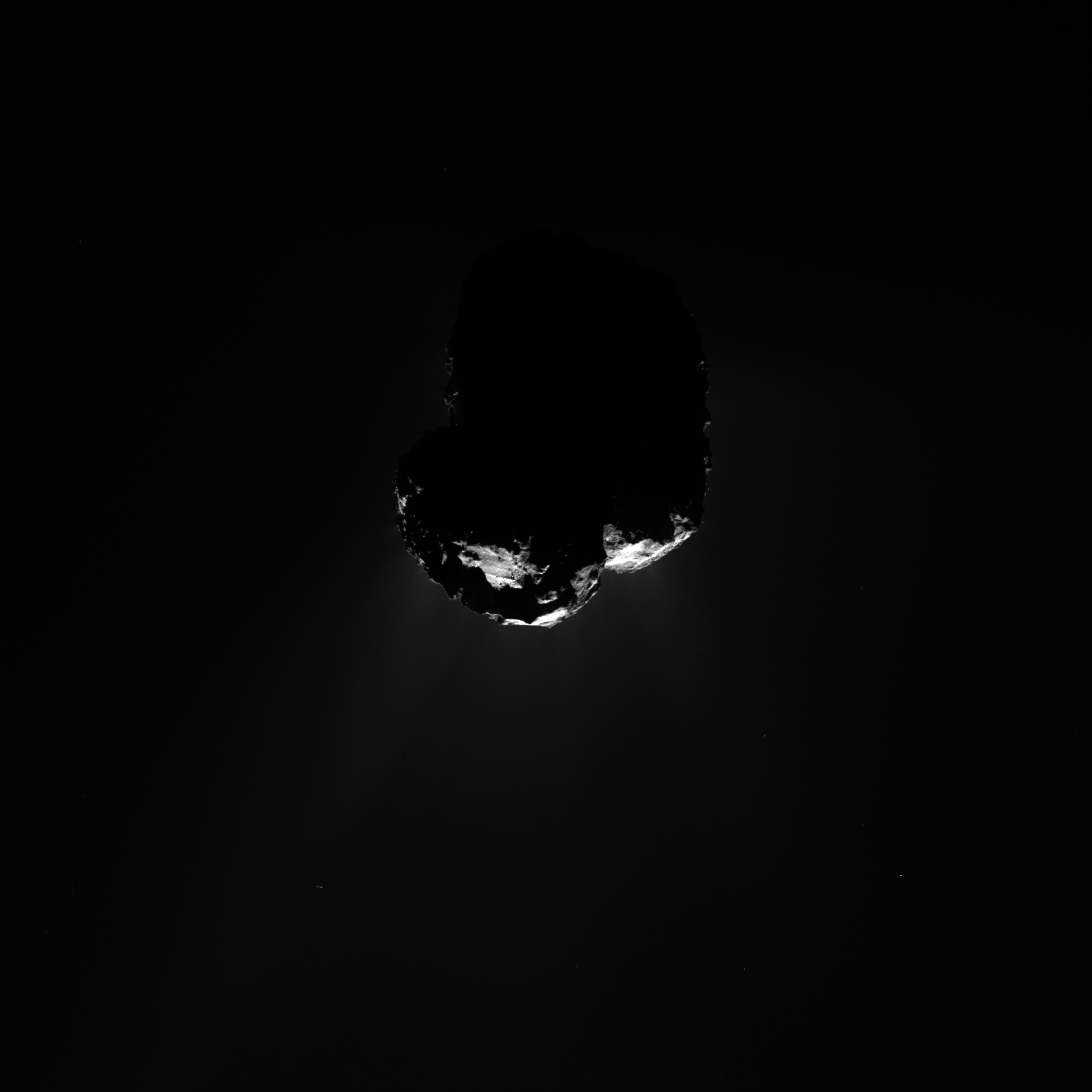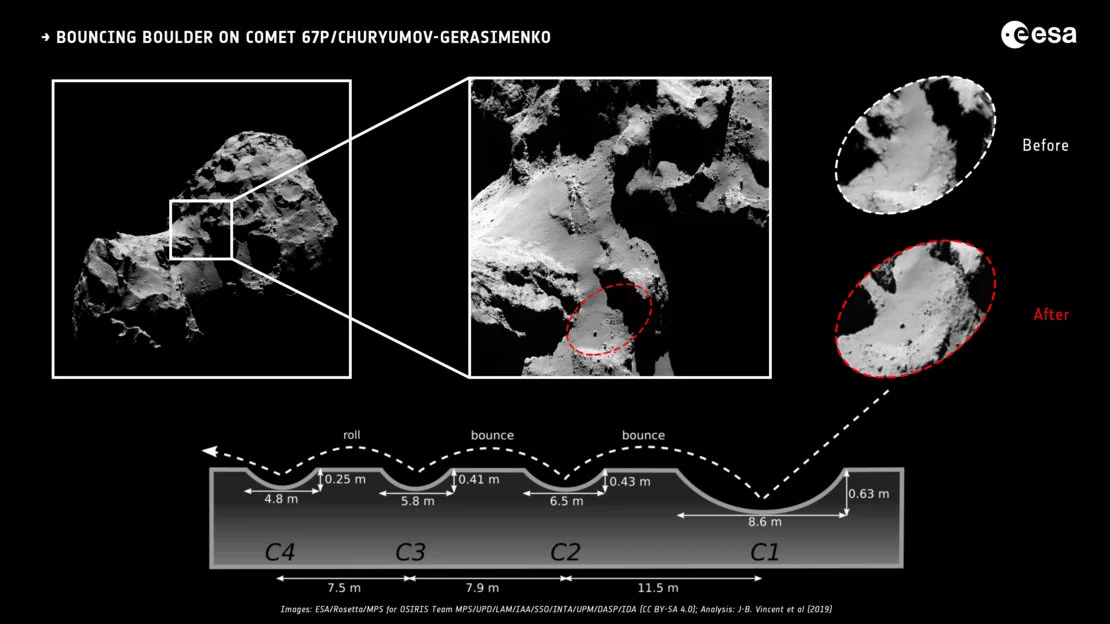Images returned by the Rosetta mission show dramatic evidence of collapsing cliffs and bouncing boulders on Comet 67P/Churyumov-Gerasimenko. Collected by the unmanned ESA probe from August 2014 to September 2016, the pictures of 67P are a chronicle of how the surface of the comet changed over time as it became more active during its closest approach to the Sun.
ESA's Rosetta mission may have ended three years ago, but the data returned will keep space scientists busy for many decades to come. Of particular interest are 76,000 images sent back by the OSIRIS high-resolution camera that show just how much the comet changed as the heat of the Sun warmed the ice, dust, and frozen gases inside, causing them to boil off into space.
The images also show that although the gravitational pull of 67P is so tiny that you could achieve escape velocity by jumping, it isn't non-existent. True, 1/10,000th of Earth's gravity may seem ridiculously small, but it is there. And while dust and even boulders were seen being ejected into space, never to return, others rolled down and even bounced along the surface while whole cliffs collapsed.

This was especially true in the neck region that joins the two lobes of the dumbbell-shaped 67P, where a 10-m (33-ft) boulder fell from a cliff and bounced several times before coming to rest.
“We think it fell from the nearby 50-m-high (165-ft) cliff, and is the largest fragment in this landslide, with a mass of about 230 tonnes,” says Jean-Baptiste Vincent of the DLR Institute for Planetary Research. "So much happened on this comet between May and December 2015 when it was most active, but unfortunately because of this activity, we had to keep Rosetta at a safe distance. As such we don’t have a close enough view to see illuminated surfaces with enough resolution to exactly pinpoint the 'before' location of the boulder."
Aside from providing mission control with a bit of silent spectacle, the avalanches have helped scientists to better understand the structure of 67P. The images indicate that the materials of the comet are very fragile and that the boulders have a consistency 100 times weaker than freshly packed snow.

Also, the cliffs collapsed along lines of weakness, which resulted in slumps from 70 m (230 ft) wide to one where an area of 2,000 m² (21,500 ft²) fell. In addition, the images show how the increased heat as 67P approached the Sun made it more active. Images before and after perihelion (the point where the comet's trajectory brings it closest to the Sun) demonstrate how much the increased activity altered the surface.
"Rosetta’s datasets continue to surprise us, and it’s wonderful the next generation of students are already making exciting discoveries," says Matt Taylor, ESA’s Rosetta project scientist.
The research was presented at the EPSC-DPS conference in Geneva (PDF).
Source: ESA







